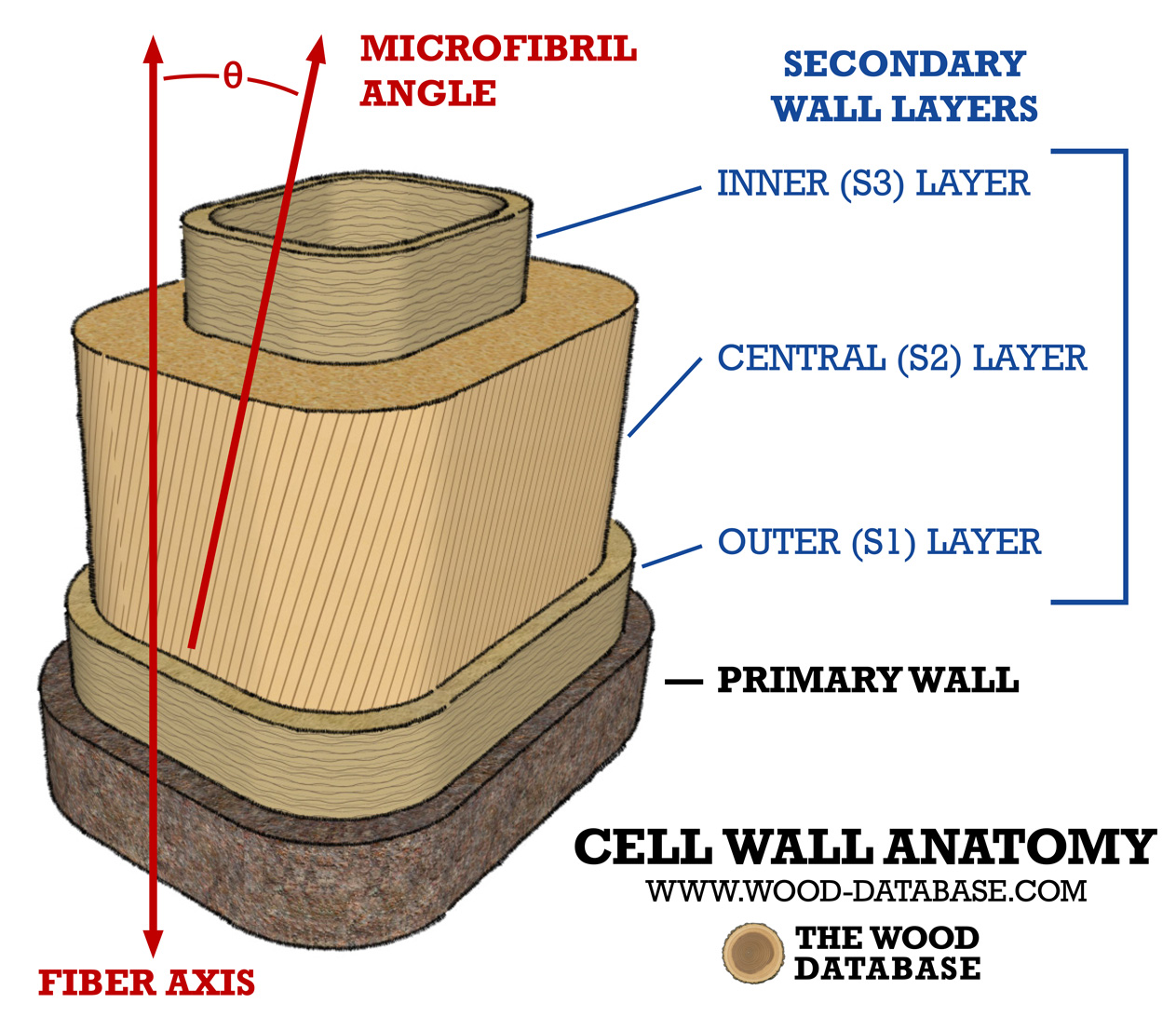Regardless of one’s feelings about the results of the bow index list above, it is almost universally recognized that modulus of elasticity (MOE) is a very important measurement for wood bows. After all, the very act of bending an archery bow has direct bearing on this measurement. But unlike wood hardness, which has been shown to have a very strong and predictable relation to wood density[2]Wiemann, M. C. (2007). Estimating Janka hardness from specific gravity for tropical and temperate species (Vol. 643). US Department of Agriculture, Forest Service, Forest Products Laboratory., MOE has shown much more of a variation with relation to a wood’s density. In short, there appears to be some woods that are heavy, where you’d expect them to be commensurately stiffer as well, but that’s not always the case. There appears to be at least one other factor in play in determining MOE.
Enter microfibrils.
Microfibrils are tiny strands found within the cell walls of wood. Usually they run parallel with the wood grain, but that’s not always the case, and they can sometimes run at varying degrees off of parallel, which is called the microfibril angle (MFA). (See the notes in red lettering pertaining to the central S2 layer in the reference image below.)
Note this is not to be confused with interlocked or spiral grain found in some wood species, as microfibrils are much smaller—it’s possible to have a wood with straight grain but angled microfibrils.

It appears that the microfibril angle (MFA) is the hidden variable that accounts for (most) of the remaining variation in predicting MOE, since the value is so hard to predict if relying on wood density alone. In studying species of Eucalyptus, it was found that “MFA alone accounted for 87 percent of the variation in MOE, while density alone accounted for 81 percent. Together, MFA and density (as Density/MFA) accounted for 92 percent of the variation in MOE.”[3]Yang, J. L., & Evans, R. (2003). Prediction of MOE of eucalypt wood from microfibril angle and density. Holz als Roh-und Werkstoff, 61(6), 449-452. So an increased off-axis microfibril angle contributes to a decrease in MOE. (Specifically, the microfibril angle in the larger central S2 layer pictured above.[4]Donaldson, L. (2008). Microfibril angle: measurement, variation and relationships-a review. IAWA Journal, 29(4), 345-386.) But perhaps equally important, though easy to overlook, the same study found that “MFA had little independent influence on MOR.”[5]Yang, J. L., & Evans, R. (2003). Prediction of MOE of eucalypt wood from microfibril angle and density. Holz als Roh-und Werkstoff, 61(6), 449-452.
In practical terms, the microfibril angle acts as a special variable that allows otherwise dense and strong woods to have a disproportionately low MOE with no effect on the MOR. An increased density would also mean an increase in both MOE and MOR, which would have little to no effect on a wood’s bow index. But woods with a high MFA could have the peculiar combination of a high MOR and a low MOE, exactly what we’re hunting for.











































